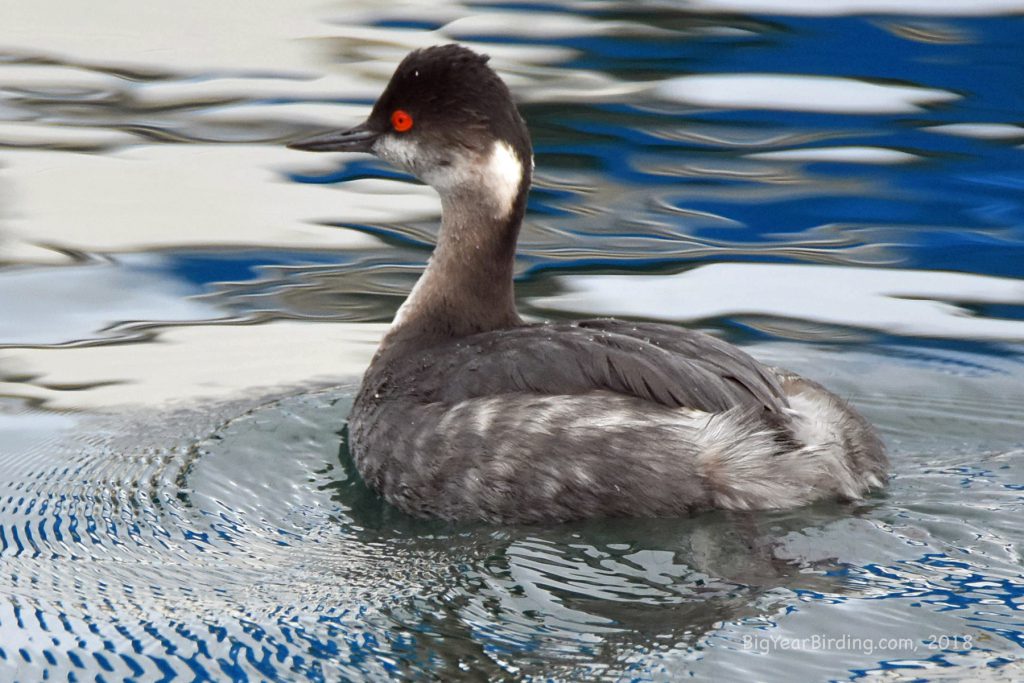
The Eared Grebe is a small freshwater diving bird that is distributed throughout North America. It measures around 12-16 inches in length and weighs between 5-9 ounces. These birds have a distinct breeding plumage, with a black cap, chestnut-colored neck, and golden-yellow tufts behind their ears, which give them their name. During the non-breeding season, their plumage becomes more subdued, with a grayish-brown coloration.
One of the distinguishing field marks of the Eared Grebe is its pointed, upturned bill. It also has striking red eyes, which provide an excellent contrast against its dark cap. These birds have a slim body shape, and their wings are set far back on their body, which enables them to swim and dive with ease. They are also known for their unique courtship displays, which involve synchronized head-bobbing and running on water.

Eared Grebes are migratory birds that breed in the wetlands of western North America and spend their winters along the coasts of California and Mexico. During migration, they can be seen in large flocks, often gathering in the hundreds of thousands. They prefer shallow wetlands and lakes with extensive reed beds, which provide an excellent source of food for these birds.
In the winter, Eared Grebes feed mainly on small fish and invertebrates, which they catch by diving to depths of up to 20 feet. During the breeding season, they will also feed on insects and other small aquatic animals. These birds are also known to form large rafts on the water, which provide protection against predators and help them conserve energy during the colder months.
The Eared Grebe is a fascinating bird species that provides an excellent subject for birdwatchers and nature enthusiasts. With their striking plumage, unique courtship displays, and migratory behavior, these birds are a true marvel of nature. However, like many other bird species, the Eared Grebe is facing various threats, including habitat loss and degradation, pollution, and climate change. Conservation efforts are necessary to ensure the survival of this species and maintain the ecological balance of wetland ecosystems.
